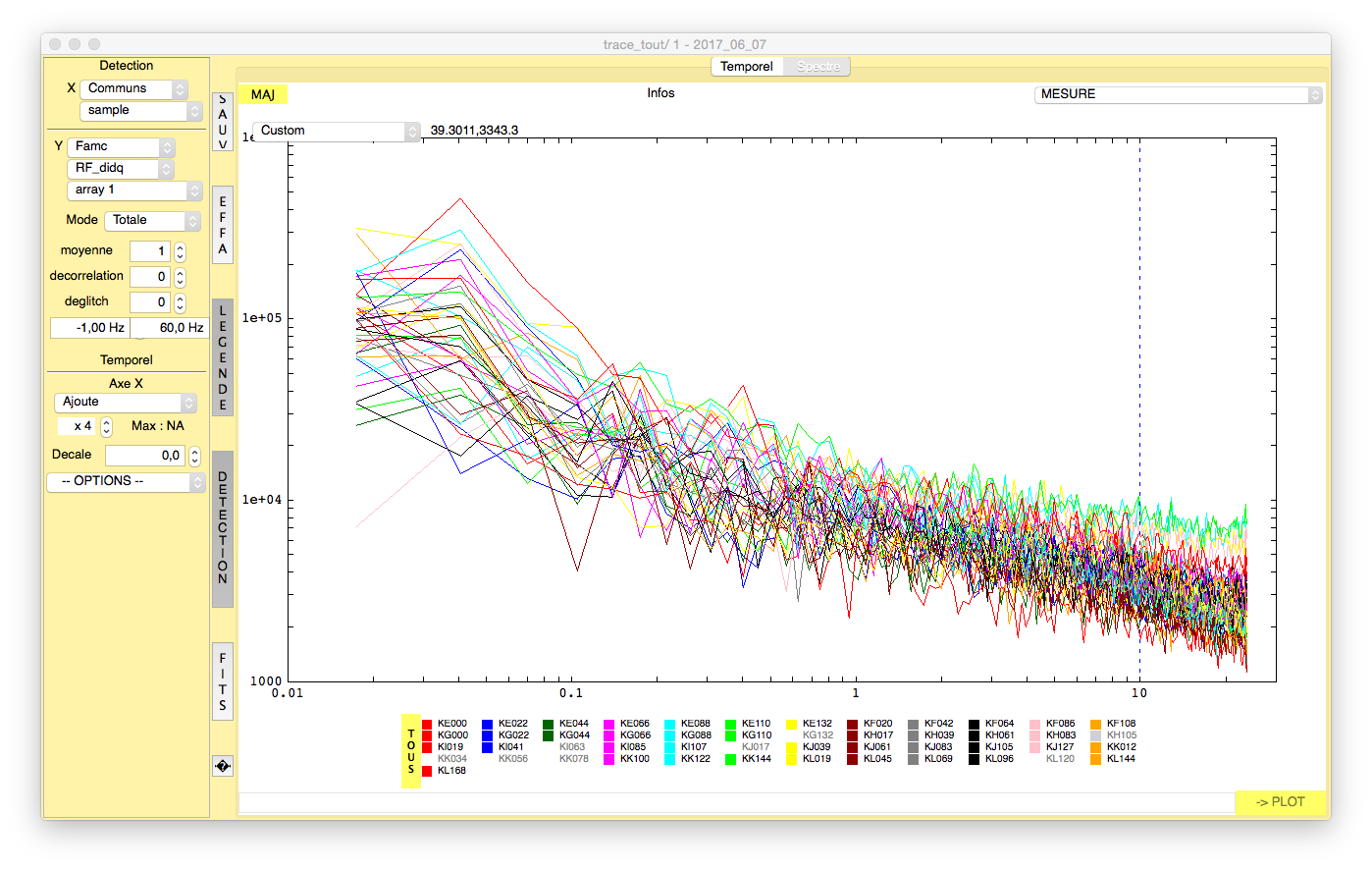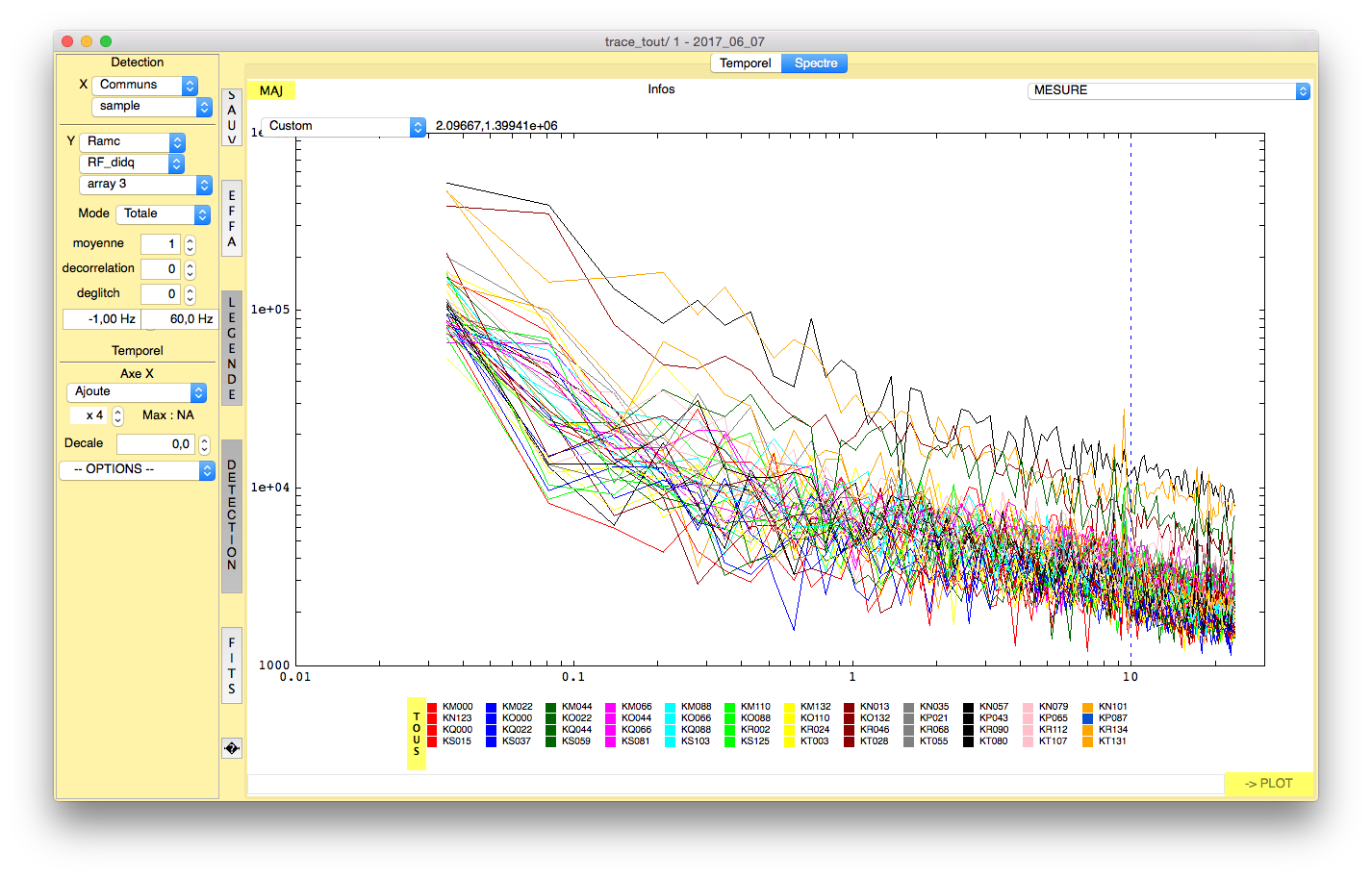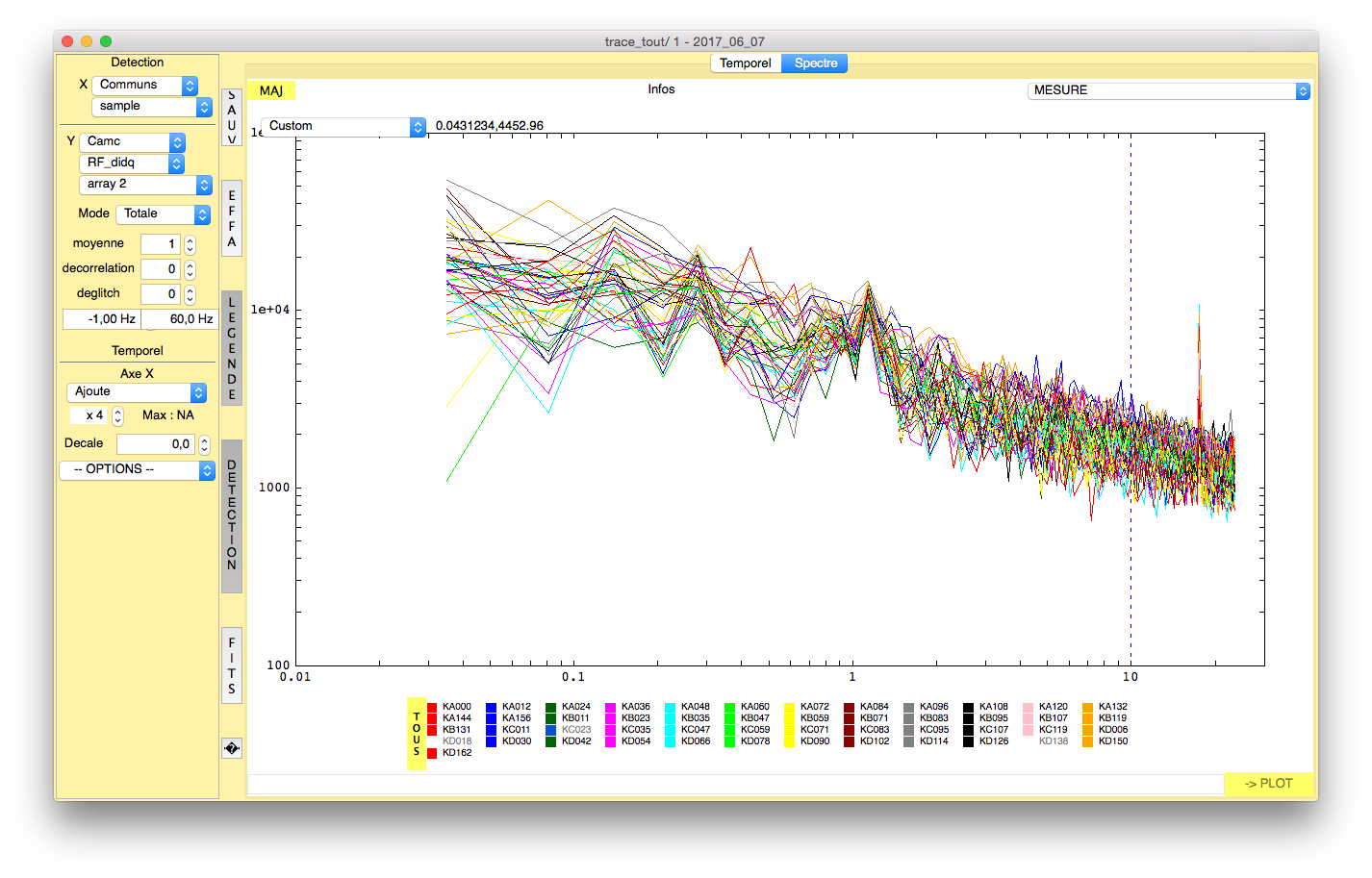|
Size: 4553
Comment:
|
Size: 4561
Comment:
|
| Deletions are marked like this. | Additions are marked like this. |
| Line 44: | Line 44: |
| Around 8-9 pm we switched on the turbo pump reaching a value of ~200 mK as detectors temperature. We keep this configuration for the rest of the night observations. | Around 8-9 pm we switched on the turbo pump and the detectors temperature could reach a value of ~200 mK. We keep this configuration for the rest of the night observations. |
Back to the NIKA2 Run 11 main page
Daily Reports
June 9, (Friday)
Before midnight, the cryostat looks to be working well, and the array is at ~189mK. We plan to observe a few quasars throughout the night with a "standard" script, with 2.98 Hz HWP rotation. Our plan (for the day) is to observe [ALL TIMES BELOW IN UT! UT = Local Time - 2h]:
- 1651+399 from 19h* until 23h *For this night, we start at 21h
- 3C286 frp, 23h until 01h
- 2200+420 from 01h until 04h
- 2251+158 from 04h until 07h } This (2251+158 is bright) with 2230+114 (fainter) are close together.
- 2230+114 from 04h until 07h } Once we have a good integration on 2251+158, we will focus on 2230+114
- 2200+420 from 07h until 09h We will observe this source again, once back in a reasonable range of elevations.
- Mars from 09h until 15h30
- 3C286 from 15h30 until 19h
June 8, (Thursday)
Division of shifts: 23h-07h: A. Bacco, J.F. Lestrade, & C. Romero 07h-15h: A. Catalano, N. Ponthieu, & A. 15h-23h: Y. , A. Ritacco
12h: Start of the observations. The turbo pump switched off several times during the first part of the observations, so we decided to start the observations without it. The plan of the day is to start the observations on a planet (Mars) to characterize the instrumental polarization (i.e intensity to polarization leakage effect). We want also to characterize the noise due to the HWP modulation which is peaked at harmonics of the HWP rotation frequency. Running faster with the HWP means to have access to faster scanning speeds of the telescope but we could have a noise not trivial to subtract from the timelines. In order to find a compromise between this two issues we decided to make tests doing observations with different parameters as follows:
F. sampling |
HWP rotation frequency |
47.7 Hz |
2.98 Hz |
47.7 Hz |
3.97 Hz |
47.7 Hz |
1.49 Hz |
23.3 Hz |
1.49 Hz |
We changed also the scanning speed for the observations at 47 Hz of sampling frequency. In particular we noticed that running the HWP at ~3Hz with a scanning speed of 25"/s and at 4Hz with scanning speed of 30 "/s makes the subtraction of the "HWP" template easier. Waiting for a deeper data analysis we decided to run the HWP at a nominal sampling frequency of 47 Hz with ~3Hz of HWP rotation frequency. Around 8-9 pm we switched on the turbo pump and the detectors temperature could reach a value of ~200 mK. We keep this configuration for the rest of the night observations.
* The turbo pump has been switched on at 09h35 UT set at 30%
* We measured the noise with the window on the cryostat and a base temperature of 265mK to check if the pulse tube is visible. It does not seem to generate a noise that can bother us during the observations. However, the 1/f noise is large. We hope that after switching on the turbo molecular pump this contribution will be decreased.
Array 1

Array 3

Array 2

June 7, (Wednesday)
* We performed the optical alignment check with Santiago. The alignment is good so we did not change the position of the mirrors. We also checked the alignment of the HWP.
* The electronics of the HWP wheel is working nominally. We tested different speeds without problems.
* Juan Penalver tested the temperature control of the cabin and setting the temperature at 12°C for few hours. Tomorrow before starting the observation we will switch on the turbo pump after setting the temperature of the cabin to 10 or 12°C.
June 6, (Tuesday)
* Aina, Alessia, Nicolas and Andrea arrived at the telescope. The idea is to prepare carefully the observations starting on Thursday since the last observation in polarisation performed with NIKA2 was more than a year ago. Nicolas Aina and Alessia worked on the polarisation pipeline, Andrea set up the polarisation facilities and check their proper operation.
* The temperature of the mixing chamber is about 265 mK without using the turbo molecular pump. The pressure on P101 is slowly increasing showing that the trap is saturating. It does not seems to be a big problem because the slope is about 40mbar/day meaning that probably we can observe until next tuesday without switching the trap.
